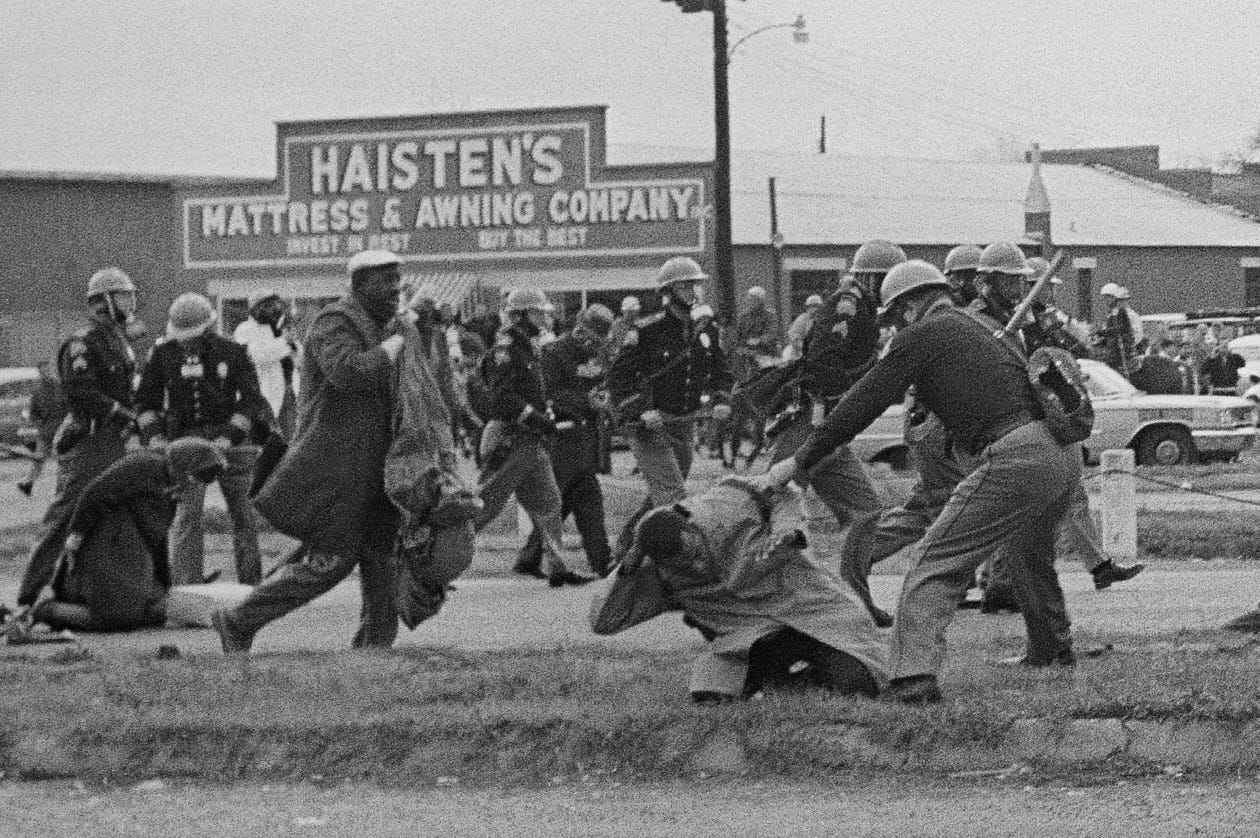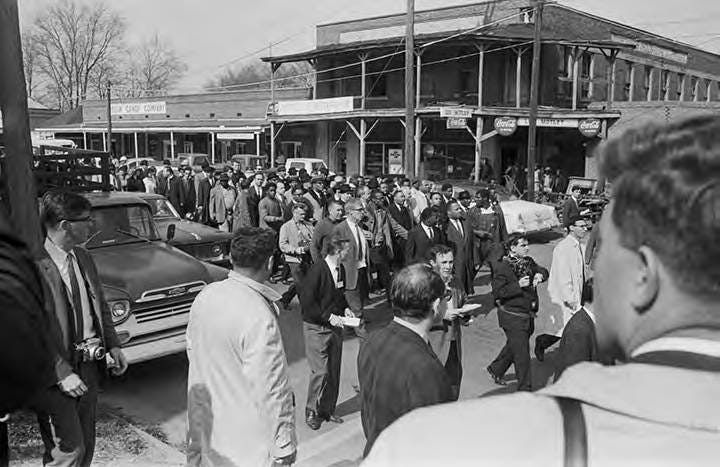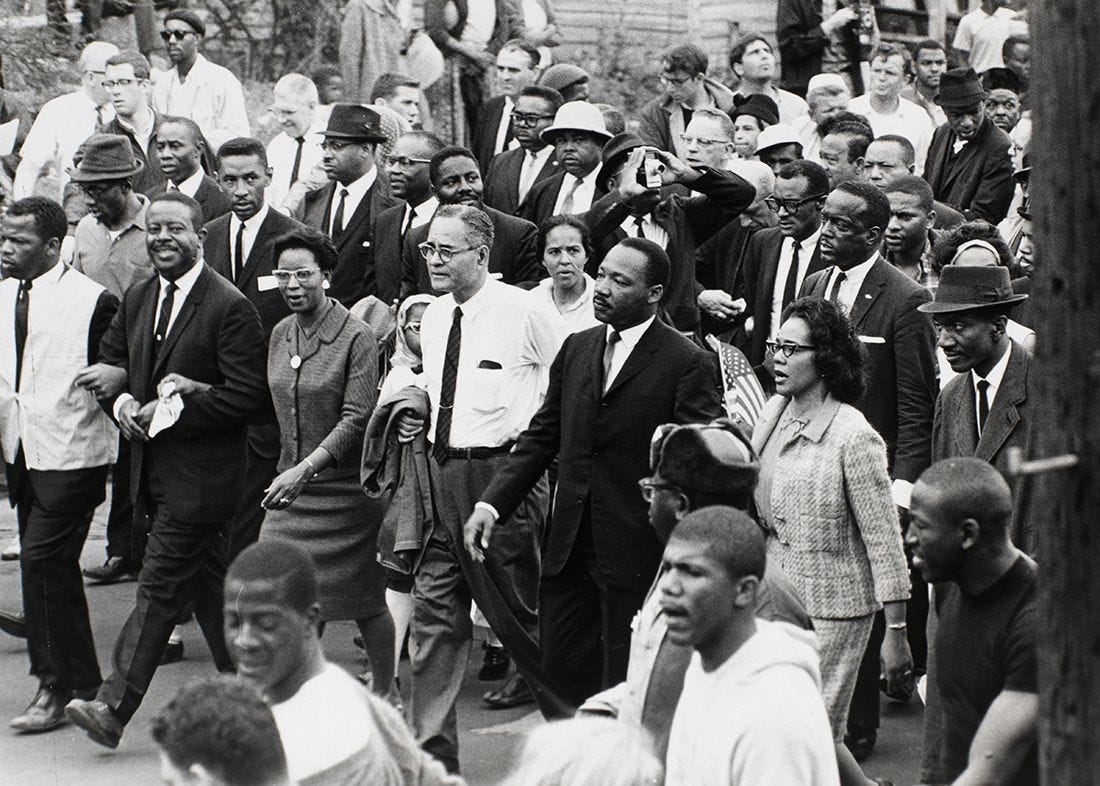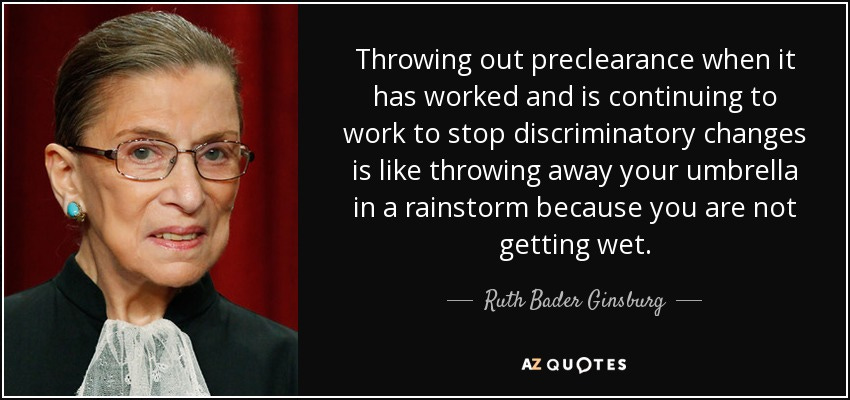Because I am a good time at a party, I am almost always thinking about voting rights. So let’s talk about it!
The Emancipation Proclamation
On January 1st, 1863, in the third year of the Civil War, President Lincoln issued the Emancipation Proclamation which meant that all enslaved people in Confederate states were free1.
Union soldiers, many of whom were Black, spread the news in Confederate states.
But in the Confederate states, there was a lot of, like, “😬”-ing going on with white enslavers.
That was January 1st, 1863.
The Civil War ended on April 8th, 1865.
It wouldn’t be until June 19th, 1865, when roughly 2000 Union troops arrived in Galveston Bay, Texas, and were VERY surprised to see over 250,000 enslaved Black people there.
They read the now two-and-a-half-year-old Emancipation Proclamation. And thus a quarter million Black people, who were free but their enslavers never told them (or allowed them access to the information, or education to read the information), were informed of their freedom.
1865 - 1877
Reconstruction followed from 1865 to 1877, during which 1,500 Black Americans were voted into different political offices around the country.
They were elected in positions from sheriffs, justices of the peace, and superintendents of education up to state senators and representatives, as well as the first Black senators and representatives to the U.S. Congress2.
Jim Crow Laws
In 1877, we saw the beginning of Jim Crow laws and poll taxes and literacy tests, specifically designed to keep Black Americans (mostly, although really anyone except for non-poor white people was treated to these laws) from casting a ballot3.
Selma to Montgomery
On February 18th, 1965, a young father, civil rights activist, and church deacon, Jimmie Lee Jackson, was protesting alongside his mom, sister, grandpa, and 500 others, in Selma Alabama. They were protesting the arrest of James Orange, who was in jail for working to get Black Americans registered to vote.
Jimmie Lee Jackson, his family, and 500 others were on a peace walk from church to the jail where Orange was being held about a block away.
A peace walk.
They were met by a line of police officers and state troopers, who began to beat the protestors.
Jimmie Lee, as well as his 16-year-old sister, his mom, and his grandpa, all managed to make their way into Mack’s Café, behind the church, where they continued to be followed by state troopers.
After being thrown to the floor, Jimmie Lee watched as troopers went after his sister and mom. When he went to protect his mom, State Trooper James Fowler shot him. Even after he was shot, police continued to beat him.
He died in the hospital eight days later.
On March 7th, between 5 and 600 protestors went out again. Led by John Lewis and Reverend Hosea Williams, they planned to march from Selma to Montgomery to highlight the need for voting rights and to protest the death of Jimmie Lee Jackson.
Just outside of Selma, on the Edmund Pettus Bridge, protestors were brutally beaten by state troopers and county posse.
We know this march by its other name: Bloody Sunday.
A second march was scheduled to take place on Tuesday the 9th, about 2500 marchers, led by Martin Luthor King Jr, marched out to the Edmund Pettus Bridge, held a short prayer session, and then turned around. A signal that they would not give up, but also as a way to stay within a court order. This became known as Turnaround Tuesday.
Finally, on March 21st, with a green light from the White House, 8000 people gathered at Brown Chapel A.M.E. Church to begin their walk from Selma to Montgomery.
They made it into Montgomery on the 24th and on the 25th, more than 25,000 people marched from St. Jude to the State Capitol Building.
There, MLK gave his “How Long, Not Long” speech. And while you might not know the speech by it’s name, you know this line:
“Because the arc of the moral universe is long, but it bends toward justice."
But perhaps a better line for the moment is this one:
“The end we seek is a society at peace with itself, a society that can live with its conscience. ... I know you are asking today, How long will it take? I come to say to you this afternoon however difficult the moment, however frustrating the hour, it will not be long.”
The Voting Rights Act
After protests and marches, a church bombing that killed four young girls, people being beaten within an inch of their lives on the Edmund Pettus Bridge, and inches further in restaurants and shops and back alleys all around the country, came the Voting Rights Act of 1965, which prohibited race, color, or membership in one of the language minority groups from being something that prevented folks from being able to cast their ballot.
That was 1965.
Shelby County v. Holder
In 2004 we elected our first Black president, and in 2013 the Supreme Court cut a key piece of the Voting Rights Act, making it so much easier to create race-neutral discrimination laws4.
Famously, Justice Ruth Bader Ginsberg said this about gutting the preclearance section of the VRA:
Hours later, Texas implemented a voter ID law that the Justice Department previously said was illegal because it disenfranchised voters. Knowing that was the consequence, (then-Attorney General) Greg Abbott gleefully pushed forward the legislation.
Twenty years later, thirty-six state laws request or require voters to show some form of identification at the polls. Meanwhile, a literal convict who is indicted for trying to steal, in multiple forms, multiple elections, is trying to convince us that the election five months from now is already stolen - just like the other ones.
They weren’t.
(Though not from his lack of trying.)
Now What?
If that history made you upset… it should. Check your voter registration.
It might have gotten its feathers a little ruffled, but people fought and died for that Voting Rights Act. It remains a vital piece of democracy.
It is harder than it should be, for a lot of people, but we still have the right, and therefore the duty, to cast a ballot.
We still have a democracy.
It is the fight of this moment, to keep it.
Don’t forget - this is also a podcast :)
Hey, also:
(Or as an ebook on Amazon or Apple Books.)
And more than anything else… don’t forget:










